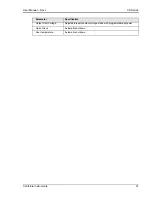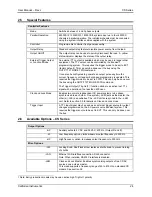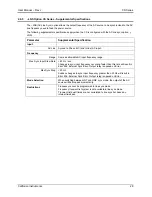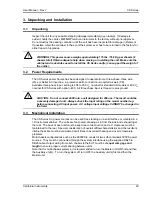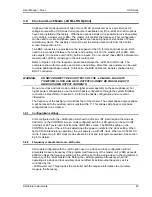
User Manual – Rev J
CS Series
California Instruments
31
3.4
AC Input Wiring - INPUT
AC input connections are to be made directly to the input fuse block of all units that make up a
CS system. The input block is located on the lower right hand corner of the back of the 4500CS
and 4500CS-NO chassis. It is labeled “INPUT (TB3).”
Ground (earth) wire must be connected to the chassis of the AC power system using the ground
connection of the AC input fuse block. The mains source must have a current rating equal to or
greater than the input fuses and the input wiring must be sized to satisfy the applicable electrical
codes.
The input power cables must be large enough to handle the input current of the power source
and must conform to local electrical codes. Consult a qualified electrician prior to installation.
Note that all wires must be sized to accommodate the worst-case maximum current that may
occur under low line conditions. Local electrical codes may also require different wire types and
sizes.
Cable lengths must not exceed twenty-five (25) feet. For lengths greater than 25 feet, calculate
the voltage drop from the following formula:
2 X DISTANCE X CABLE RESISTANCE PER FT. X CURRENT = VOLT DROP
Note: If possible, keep input cable lengths for Master and Auxiliary chassis equal.
CAUTION: Capacitors in the power source may hold a hazardous electrical charge
even if the power source has been disconnected from the mains supply. Allow
capacitors to discharge to a safe voltage before touching exposed pins of mains
supply connectors.
Power modules need at least 10 Minutes to discharge to safe levels before they can
be removed.
3.5 Output
Connections
3.5.1 Output
Wiring
The output terminal blocks for each unit are located at the rear of the unit. Three phase output
connections are made to the terminal block labeled OUTPUT. For a 9000CS/2 two-box system,
the output terminals from both the master 4500CS and Auxiliary 4500CS must be connected
together. See Figure 3-2.
On CS Series, the phase outputs are labeled øA, øB, øC and NEUT. The common (neutral)
connection (if needed) can be made on the same terminal block labeled NEUT. If the power
source is operated in single-phase mode, all power is available from the øA output connection.
The neutral connection (NEUT) is always required for single-phase output mode on a CS
system and may be used if needed for the EUT for all three-phase output modes.
The external sense inputs allow the power system output voltages to be monitored directly at the
load and must be connected at external sense connector. The external sense wires should be
run as a twisted pair for short lengths. Sense leads over three (3) feet long should be run as a
twisted shielded pair.





